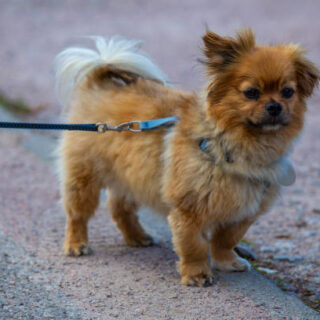Your cart is currently empty!

Single Product
Sloughi
Sloughi The Sloughi is one of the sighthound breeds of North Africa originating in the band of countries which border the Mediterranean: Algeria, Tunisia, Morocco and Libya. The desert type were lighter in frame than those used on mountainous terrain. The Sloughi was probably brought to Europe after the French occupation of Algeria. The Sloughi…
Description
Sloughi
The Sloughi is one of the sighthound breeds of North Africa originating in the band of countries which border the Mediterranean: Algeria, Tunisia, Morocco and Libya. The desert type were lighter in frame than those used on mountainous terrain. The Sloughi was probably brought to Europe after the French occupation of Algeria. The Sloughi is a lean sighthound, sharing some similarities with the Saluki. His evident pinbones and sweeping underline are sighthound features. The Sloughi does not naturally carry any subcutaneous fat as this is a cooling mechanism for desert conditions and this results in a very slim body.
General appearance
Elegant, racy yet strong without coarseness, square proportions capable of sustained effort over long distances. A dignified hound with fine skin marked by its muscular leanness.
Characteristics
Quiet, of dignified bearing. Noble, haughty and loyal with the instinct of a hunting hound.
Temperament
Reserved, aloof with strangers. Neither nervous nor aggressive. Affectionate with family.
Head and skull
Long, refined, an elongated wedge showing strength but not excessively angular. Skull flat, fairly broad. Clearly rounded at back of skull and curving smoothly into sides. Slightly marked frontal bone and pronounced occiput. Muzzle refined without exaggeration, about equal in length to skull. Slight stop. Nose and lips black, may be slightly lighter in dilute colours.
Eyes
Large, dark to dark amber, oval, set slightly obliquely. Expression gentle, rather sad and wistful, eye rims pigmented.
Ears
Flat: not too large, triangular in shape but with rounded tips. Usually folding down and carried close to head, set level with, or slightly above eye but may be carried away from the skull.
Mouth
Jaws strong with a perfect, regular and complete scissor bite, i.e. upper teeth closely overlapping lower teeth and set square to the jaws.
Neck
Strong yet very elegant in proportion to body. Moderately long with good arch. Skin showing fine pleats under throat.
Forequarters
Shoulder blades long and set obliquely onto body. Flat bone and well muscled. Upper arm of moderate length. Pasterns supple and strong.
Body
Chest not broad. Prominent sternum. Slightly sprung ribs giving fairly flat appearance, reaching almost to point of elbow. Reasonably well-ribbed back with definite tuck up. Loin short, broad and muscular, and slightly arched. Topline almost level. Relatively short croup, obliquely set. Pin bones evident.
Hindquarters
Strongly muscled. Fairly flat appearance with moderate angulation, Second thigh long and well-developed. Hocks well let down.
Feet
Lean, elongated oval or hare foot, fairly well arched.
Tail
Fine and well set on without fringes or long hair. Strong curve at end which preferably reaches to point of hock. Set in line with croup as a continuation of topline. When moving never carried higher than level of back.
Gait/movement
Free, smooth, effortless gait, head carriage not too high. Without exaggerated extension.
Coat
Fine and short. Undercoat may grow during winter. No feathering.
Colour
Light to red sand with or without black mask;
Brindle with or without black mask;
Black mantle with sand or brindle points;
Small white mark on chest permissible but undesirable.
Size
Height at withers: dogs 66-72cms (26-28¼ ins); bitches 61-68cms (24-27 ins) encompassing finer desert and heavier mountain types.
Faults
Any departure from the foregoing points should be considered a fault and the seriousness with which the fault should be regarded should be in exact proportion to its degree and its effect upon the health and welfare of the dog and on the dogs ability to perform its traditional work.
Note
Male animals should have two apparently normal testicles fully descended into the scrotum.





